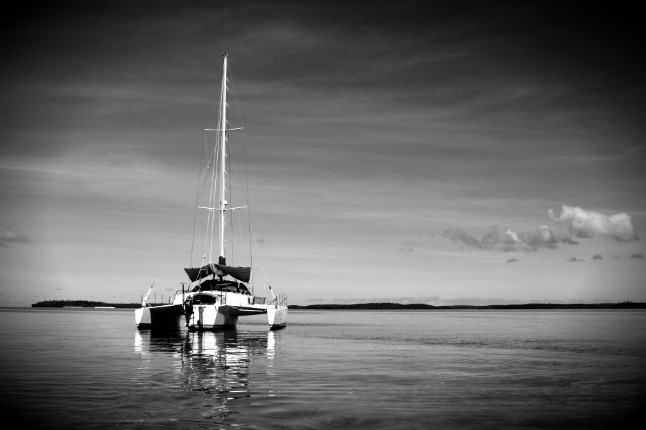Great Adventure Hoaxes: Sailing Nowhere Fast
We may receive a commission on purchases made from links.
Donald Crowhurst set sail from England in fall 1968 aboard a plywood trimaran as a competitor in The Sunday Times Golden Globe Race, the first-ever single-handed, nonstop, round-the-world yacht race. Though he designed navigational devices, Crowhurst was a poor sailor in a terribly inadequate boat. Facing the humiliation of complete failure, he veered off course to the South American coast, where he laid low for months to wait for his competitors to round Cape Horn, breaking radio silence only occasionally to misreport his position: behind the leaders, but quickly gaining. When a competitor sank in his blind race to "beat" Crowhurst and claim the £5,000 prize, he was racked with guilt. Weeks later, his boat was discovered drifting in the middle of the Atlantic, with no evidence of the hapless sailor's whereabouts. His logbook suggests that, overwhelmed by hopeless and beset by personal demons, he probably stepped over the side and disappeared into the ocean's murky depths.
In Depth
What's oddest about Crowhursts's big deception isn't that he came close to pulling it off, but that, in the end, it's not clear who he was deceiving—himself or the public. Despite many personal failures—including three failed careers by his mid-20s and, as he prepped for the race, the impending collapse of his own business—accounts show that he began to develop a God complex, and thought himself invincible.
In 1967, Francis Chicester captured Crowhurst's imagination and all of England's hearts when he completed the world's first one-stop solo circumnavigation. The next step was a nonstop sail around the globe, and Crowhurst improbably thought himself capable of it. What's more, he convinced a wealthy backer, race judges and the media that he could do it. His boat, the Teignmouth Electron, was haphazardly designed and built in 1968. The final product was as flawed as its captain, who continued to paint a picture of romantic self-confidence for the media, even as his personal anxieties mounted, affecting his mental and physical health.
This dichotomy—between seemingly delusional outward bravado and completely lucid, candid private worry—continued into the race. After two full weeks, a series of dysmal setbacks put Crowhurst only off the coast of Portugal, and he realized that the only way he could win the race was if everyone else dropped out. He went through a deep personal accounting at that point, struggling with the decision to press on or throw in the towel.
He pressed on, of course, but settled on a glorious stunt to save face. He considered sailing to Australia before giving up, trying for a single-day sailing record, and even slinking off to America to sell his boat for cash. In the end, he settled on sailing to South America and lying in wait while his competitors continued their journey eastbound across the Pacific and around Cape Horn. He kept two versions of his daily positions—one real and one falsified to show him on a record-setting round-the-world course. As the months ticked by, waiting for his competitors to "catch up" and maintaining just enough communication to inspire confidence in his ruse, a double personality began to emerge in Crowhurst's logbooks. It got worse when one of his only remaining competitors, Royal Navy officer Nigel Tetley—who admitted he was pushing his boat too hard in an effort to shake the pursuing Teignmouth Electron—sank his boat in a storm off of the Azores. Crowhurst's zigzagging course off the South American coast slowed to a crawl, and he began writing nonsensical poems, recording metaphysical thoughts and, eventually, scribbling long, confused philosophical "revelations."
His last logbook record was on July 1, 1969. On July 10, a Royal Mail ship came upon the Teignmouth Electron drifting eerily in the mid-Atlantic, 1,800 miles from England. Crowhurst was nowhere to be found, but his hoax became apparent from his logbooks—as was his torturous descent into madness.
You can read more about Crowhurst in Nicholas Tomalin and Ron Hall's classic adventure book, The Strange Last Voyage of Donald Crowhurst, and in David Roberts's book, Great Exploration Hoaxes.
